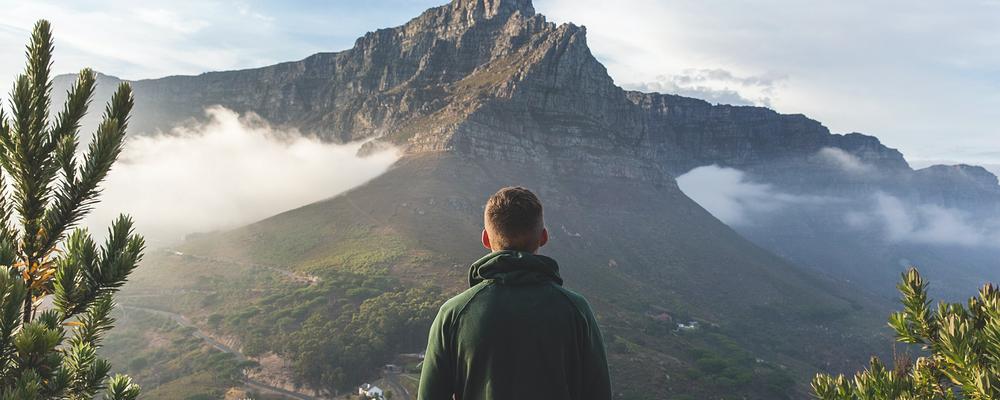
- Home
- Go international
- Inspiration
Inspiration
On this page we have gathered stories from students who have done an exchange or internship abroad.
Student's stories
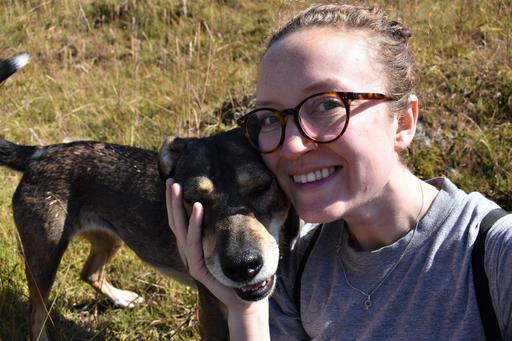
I went to Peru to do a field study as a part of my master thesis in investigative journalism. The road there was not easy. Honestly, neither was the field study. But I’ll get there.
The first time I went to Peru was on a backpacking trip in 2017. I had been travelling through Central America with two friends and when they left, I continued by myself. I ended up staying in Peru for almost two months before continuing my travels, absolutely loving it.
Applying to study abroad
I came back to Sweden straight from South America to start my master’s degree and although I was excited, I was experiencing some serious post travelling blues. All I could think about was when – and how – I could go back to South America. With that said, I don’t think you have to have experience of a country to go there as a part of your studies. On the contrary, I think it’ll be more exciting and developing if you’ve never been. For example, I went on an exchange semester to Australia during my bachelor, not knowing a thing about it. That exchange is most likely the reason why I even dared going to South America in the first place. With that said, I was already hooked on Peru, and all I could think about was how I was going to return as soon as possible. Within my program, I was constantly looking at article ideas involving connections between Sweden and Peru and when I read about Minor Field Studies, a scholarship for (unfortunately just Swedish) bachelor and master students that want to write their thesis abroad, I knew I had my chance.
As the program I studied was going on its second year of existing, and journalism as a field was new for me, I found writing my application a bit tricky. There were no earlier applications related to investigative journalism to look at, so I had to wing it. Apparently, the result was bad. My first application got some pretty tough criticism (accompanied by a rejection), and truth be told I was thinking of giving up. My own teacher even told me to give up. But through a great deal of advice and support from a classmate, I somehow found the energy to re-write my proposal and submit it again, only a few days after my refusal. This time, I got it.
Language and cultural differences
I spoke some Spanish when I arrived in Lima, Peru’s capital. Unlike when I studied in Australia and feared even raising my hand at the risk of letting the others know I wasn’t a native speaker, in Peru there’s no way of melting in anyway. Here, I experience most Peruvians just appreciate the tourists even trying, sadly because most of them don’t. I know that language, or the fear of not speaking it perfectly, is a good excuse for telling yourself studying abroad isn’t for you. But wherever you go there are always other exchange students and honestly, most native speakers tend to be impressed with how well others speak their language, considering it’s often our second or third.
In my case, I was heading to the Peruvian Amazon to interview coffee farmers. Looking back, maybe my Spanish wasn’t good enough to capture everything that was said during my visits to different coffee plantations. But I made it work, tried to record everything and what I lacked in knowledge of the Spanish language, I made up for in enthusiasm. One thing I’d dreaded being female and 25 years old was interviewing middle aged men in a strongly patriarchal society. I couldn’t have been more wrong. The farmers I met were genuinely interested in meeting me. In this small village, an international visit was unusual. In the end, my main issue wasn’t not being listened to, but getting some honest opinions out of these hard-working farmers, as they were doing everything they could to impress me. I loved my trip to that small village. Unfortunately, it didn’t at all give me the material I needed.
Setbacks and difficulties
My most challenging moments were when I couldn’t get the material I needed for my article. I was so frustrated of the fact that I couldn’t seem to get a hold of a single person (which is a rather common phenomenon in investigative journalism, where most people you need to talk to don’t want to talk to you). Truth be told, this was my general feeling most of the time during my two months there. I just couldn’t get what I needed, which made me feel useless. Fortunately, I had a constant support from two of my classmates, one of them going through the same struggle as me but in another South American country. That is a good thing to remember, that when things feel rough abroad – and they do – it’s likely that there is some shitty Wi-Fi connection not too far away from where you’re having a crisis.
In the end, I didn’t get the material I needed. Was I bummed? Yes. Did I regret going? Not a chance. In the end, I did everything I could, and I learned a lot about my profession. It’s so important to remember that not every step outside your comfort zone is a walk in the park. It’s what comes out of it that’s important, no matter if it’s a brilliant thesis or just a bit more self-confidence. In my case, I now know that I can pull off a journalistic investigation in my third language, alone and abroad. I also decided to stay on the continent for another 10 months and adopt a dog, but that’s just a bonus.
Thinking about studying abroad?
For those of you that are thinking about going on an exchange semester, doing an internship, studying a summer course or writing your thesis abroad, I say apply for it. Then, if you’re accepted, you decide. You don’t have to take it. But oftentimes, it’s not until we’re faced with an opportunity that we realize whether we want to take it. That’s how all of this happened for me. I first applied for an exchange semester in 2014, knowing that I didn’t want to do it. When I got accepted, however, I felt like I couldn’t say no. Hell, getting the chance to go to (in my case) Australia? I had to. All in all, I had an okay time during my semester there. I found out I wasn’t a big fan of the country, but that’s alright. My mind had already been changed, from thinking I’d never ever go abroad by myself to starting to plan a backpacking trip to Central America. To think I only submitted that application because a friend forced me to. So here I am, urging you: just apply.
Elin Ackerberg
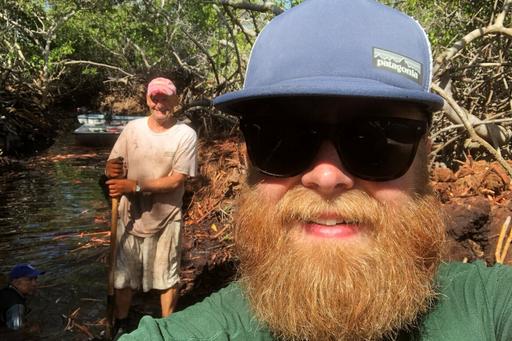
Hi! My name is Emil Ren and for 6 months I lived and worked as a biologist on a Caribbean island called Bonaire!
I am a 32 year old student from the Marine Science bachelor program and I just finished my first Erasmus+ internship abroad. As I was about to finish my bachelor thesis I found out about the Erasmus+ internship and thought it was a perfect opportunity to get some work experience in my field of study, marine biology, in a country which I would probably never go to work in otherwise.
Explore a different culture
I also wanted to explore a different culture from my own, which is something you can get a glimpse of from travelling, but to live and work in one is something else since it becomes such a big part of your life. To live in a place with a totally different climate from the one I’ve been living in my whole life, where I would be able to practice water related activities such as diving, snorkeling and windsurfing without being cold was something which also was quite tempting. But most of all, I wanted to go to a place where I could contribute with the knowledge that I’ve gathered during my studies, to protect (and inspire people to care for) the marine environment, and at the same time learn more about how life as a biologist could look like, in practice.
I contacted many different organizations and in the end I was able to choose an organization with a long and successful work with regards to protecting and safeguarding the marine environment. The name of this organization is STINAPA Bonaire.
Southern parts of the Caribbean
Bonaire is a small island in the southern parts of the Caribbean, just north of Venezuela. Along with a few other Caribbean islands that I had never heard of (Saba and Sint Eustatius) Bonaire is a part of the Caribbean Netherlands and thus also a part of the Kingdom of the Netherlands. However, these islands do not form part of the European Union, instead they constitute "overseas countries and territories” of the EU and are considered “special municipalities” in the Kingdom of the Netherlands.
Dutch and Creole
What this means, I am still not entirely sure of since it’s all very confusing, but these islands are in some ways self-controlling but still governed by the Netherlands. This mostly affects the people living on Bonaire, but for me this meant that I, as a European citizen, didn’t get the same benefits as in other EU countries. For example, a visa is required to stay on Bonaire for longer than 3 months if you’re not either from the Netherlands or the USA. The island doesn’t use the euro either, instead they use US Dollars, which I considered to be quite strange for an island belonging to a European country. Dutch is the official language and almost everyone speaks English. A big part of the population also speaks the creole language Papiamentu which is a mix of Portuguese, Spanish and Dutch and reflects the different countries which Bonaire has belonged to since it was first ”discovered” by the Europeans. Of course, Bonaire had been populated before but barely any traces of the indigenous group of people remains today.
Salt mountains and mangrove
Bonaire is roughly 1.5 times the size of Hisingen and has an arid climate with warm and sunny weather all year around. It’s also windy during most of the year which is nice in the heat and makes the island popular amongst windsurfers. Bonaire’s position in the southern Caribbean has the benefit that it is mostly free from hurricanes, some of which has devastated several of the more northern islands of the Caribbean during the most recent years. The vegetation consists of bushes, trees and a lot of cacti, which will try to puncture your skin, I talk from experience since this happened several times during field work.
Even so, Bonaire is a beautiful island and it hosts marine ecosystems like mangroves, sea grass fields and of course coral reefs, and the water is the most beautiful hue of turquoise. Giant ponds and pools used to evaporate water to create salt covers much of the southern parts of the island. The water in these ponds is as pink as the many flamingos that live on the island, and between these ponds there are mountains made out of harvested white salt crystals, some the size of a fist, which awaits being shipped to some faraway place. The population of Bonaire is quite small, around 20.000 people, so most people live in the only one town on the island, called Kralendijk, or in the small and sleepy village Rincon.
Monitoring flora and fauna
I did my internship at STINAPA Bonaire, a non-governmental national park foundation which has actively protected the nature on and around the island since 1962. Today, STINAPA manages the two national parks of Bonaire (a land park and a marine park). The marine park hosts one of the healthiest (least deteriorated) coral reefs in the Caribbean. As a biologist, I was a part of a small group called the Nature unit. This unit is responsible for monitoring flora and fauna, responding to environmental emergencies, controlling invasive species, lobbying for environmental policies and regulations, and assisting in educational programs and community outreach activities.
Coral bleaching
During my internship my knowledge of and field experience with Caribbean coral reefs and dry forests improved greatly. I attended scientific meetings and was assigned projects dealing with these habitats, including creating a bathymetric map of a potential site for sinking a wreck, comparing coral reef monitoring methods, monitoring, analyzing and reporting on coral bleaching. I also monitored Sargassum seaweed which is a growing threat for shallow marine habitats in the Caribbean region and I participated in invasive species control by removing feral goats from the terrestrial park. These wild goats has roamed the island, largely unhindered, since the Europeans brought them to Bonaire as a food supply several hundreds of years ago. This has changed the terrestrial environment to the worse with increasing erosion and reduced number of trees as a result. Removing feral goats has proven to be very difficult on the few islands where it has been done successfully, but on Bonaire there is another aspect which makes it even harder; culture. Since goats have been living on Bonaire for such a long time, they have become an important food source to the people of the island and some are very much against the plans to remove feral goats, even though the plan is to begin in a small part of the national park.
Diving
Some of the other things I did was to organize trainings and dives with volunteers to transplant coral reef sponges, participate in coral transplantation and create several online data forms to improve scientific data collection and knowledge - one of which is a dolphin and shark sighting form that is being used by all the islands in the Dutch Caribbean. Another thing I did was writing a bi-monthly article in the local paper titled "Did You Know?" where information from STINAPA’s monitoring projects was given to the public in an easy-to-read format.
All in all, I had a great experience and met some really passionate people that works hard every day to protect the beautiful nature of a Caribbean island that I’ve really come to love during my six months of living there. These people, which I am proud to call my friends, together with the beautiful nature of Bonaire are the best sources for inspiration that I could have hoped for now that I will continue with my own adventure back home in Sweden.
Emil Ren
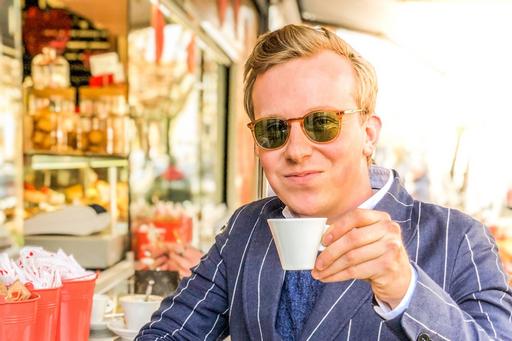
Ciao! My name is Linus Gunnarsson, I am 24 years old and I’m doing my exchange at Università Bocconi in Milan.
At Bocconi, I’m taking three law courses and two management courses. The law courses are Intellectual Property Law, Information Technology Law and International Comparative Taxation Law. All of the courses are really fun, and the lecturers are of really high quality. The management courses are called Fundamentals of Organization and Sports and Business Management.
As a law student at the University of Gothenburg, you get the opportunity to take courses of maximum 15 credits that are not related to law. I figured that courses in management would be fun and very beneficial for me in the future. And also, I really love sports, so the Sports and Business Course is amazing.
Why Milan?
I think that question is answering itself. Have you been to Milan? It’s the best place on earth. Having a cappuccino and a cornetto for breakfast, strolling in the sun, go for aperitivo every night – it doesn’t get any better. And Milan is located close to so many other cool places. I’ve visited Genoa, Como and Venice and are going to Florence and Pisa in a couple of weeks and are also planning on visiting Verona, Bergamo, Bologna. Also, soon before the exam period starts. I plan on heading to Portofino and the Mediterranean. Moreover– the school is really good.
Have you experienced any cultural differences in your hosting country/city?
Yeah, a lot of them. I mean – I love to have a coffee to go but here, it’s a crime. I do it anyway, but still. You should drink your coffee at the bar, just where you get it served.
Another thing is that people here talk so much and are so social. People never just say hi – they tell their life story.
Also, people here eat so much. There’s antipasti, a first dish, a second dish and a dessert for dinner. I never make it past the first dish. And ordering water to your meal is often more expensive or the same price as other beverages. It took some time for me to understand that dinner is at 22:00. Also, going out is really cheap and Italians are going out every day of the week. The clubs usually open really late and the entrance is usually 10 € but include one or two drinks.
What would you like to say to other students who are thinking about going on an exchange?
Do it! Gothenburg and the school library is fun – but it’s not as fun as spending 5 months in Milan. Also – you get the chance to meet so many new people from different parts of the world which is really fun. And also, take the language courses that are offered. They are really good and makes the exchange so much more fun. Italian is really beautiful.
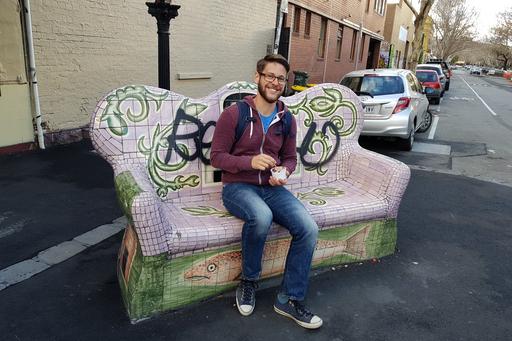
My name is Marcus Wenne, I am 26 years old, and I am studying molecular biology here at The University of Gothenburg. During my 5:th semester however, I decided that I wanted to get some new experiences, both personal, but also educational. Preferably in another part of the world. In this text I want to explain how I decided where to go, how I experienced my exchange and what I took away from it.
Why go to the country of a million spiders?
When I started to look for countries to do my exchange in I was a bit overwhelmed. The University of Gothenburg (GU) has exchange deals with universities in multiple countries on almost all continents. Should I go to some place close and similar like Norway? Someplace a bit more different, and further away like Austria? Or someplace warm and “exotic”, with a different culture, such as India? It was a hard choice, so I had to figure out what I wanted out of my exchange.
I decided that I wanted to go to a place that spoke English, was technologically advanced (molecular biology requires a lot of money, recourses and technology to practice and teach) and with an amazing environment since I am both an adventurer and a nature lover. Even though my adventuring sense was tingling when I looked at all the places I could go to, the most important factor I was thinking about was that this exchange should not have a negative impact on my education. I did not want to miss anything important, or get a worse education compared to my classmates who decided not to go. In the end Australia was the country that matched all my criteria, and Melbourne was a big city with good universities, a lot of interesting culture and interesting nature close by, such as kangaroos and reefs. I decided to apply, I was admitted to La Trobe University, and I went.
Melbourne the City of Food, Culture and Penguins
After a few weeks in Melbourne I realised that I would not experience many culture chocks (one however was that they had liquor drive in stores). If I were to explain Australian culture with an equation it would be: Australian culture = “US culture” + “UK culture” + chill. Everyone (almost) were nice, friendly and very helpful. I had many exciting and fun experiences. Twice some friends and I went to a market with food stands from all over the world: pizza, soup in a bread bowl, Greek barbecue, Thai noodles, African stews and more. The most memorable experience I had in the city must however be when we went to a pier (in the city) and saw the fairy penguins coming home for the night after an entire day out in the bay hunting for food.
I Think Studying in Australia Improved My Education
When I first arrived at La Trobe University I could honestly say that there were still a few question marks about how the Australian education system worked. How many hours of class was I going to have each day? What is the lecture to hands on lab ratio? How formal is it, do I have to address the lecturers with their titles? The last concern was quickly dismissed when a professor answered one of my emails with a wink smiley. The final nail in that coffin was when I entered his office and he had a waist high inflatable purple Milka cow (the Swiss chocolate brand) in his office, as a conversation starter.
I took two courses (15 hp each) in tandem and had almost twice the hours of lecture and four times the amount of lab hours compared to GU. It might seem like much, but it was very well structured, and I never felt over whelmed, or that I did not have time to do all the assignments we were assigned (there were quite a lot of them). I enjoyed all the new stuff I was learning!
One of the best parts of the education was the universities focus on employability. We had multiple guest lectures from different companies such as Illumina, Monsanto and more. Both about what their companies did, some of their most interesting technology, but also pure factual lectures like the one the regular lecturer had. Another thing I did not know before I started was that there was a huge modern biotech science centre called AgriBio next to the university. Here we had lab class in one of the courses 5h a week. We worked in a real lab, on a real project, with state-of-the-art equipment. These labs classes were probably some of the most rewarding labs I done in my education. I both had to use a lot of analytical thinking, but I also used equipment I would never have had the chance to use in a lab class at GU.
I Got My Nature Adventure!
Even though I focused most on my education and the study pace was higher at La Trobe I still had time for some unforgettable nature experiences. I took the picture of the parrots 5 minutes from my accommodation, but the turtle was photographed during a 3-day diving trip in the Great barrier reef, and the wallaby was eating flowers in a dream like nature reserve a few hours’ drive from Melbourne. I stayed in this nature reserve for a few days with Dive La Trobe, the diving club of the university. We did some unforgettable hiking and diving during the trip.
My Coolest Experience Was at the Bottom of The Melbourne Bay
One of the most memorable experiences in Australia was with Dive La Trobe. We started the day by doing a dive on a soft coral reef in the bay, after that we had lunch and refilled our air tanks. Our next dive was on a WW1 submarine, 30m down in murky water. This was one of the coolest diving experiences of my life. To levitate through a dark, hollow metal cigar at a depth of 30 m. The only light we had came from our torches and the occasional hole in the roof. Everything else was pitch black. After the wreck dive we snorkelled with wild seals who had occupied an abandoned light house tower in the middle of the bay. It was an unforgettable mix of reef diving and historical wreck diving. This in combination with the playful seals made it one of the best days of my exchange.
What Did I Bring With Me Home From Australia?
When I left Melbourne, it was sunny and 30 + °C. When I arrived in Gothenburg it was as close to a snow storm as it gets here. I took the bus home in my summer shorts (I got many strange looks from freezing swedes) and was happy to see my girlfriend and pets again. I enjoyed the snow, looked back at my exchange and felt happy about the last 4 months. I had the experienced what I wanted. I had dived in the great barrier reef, and in a submarine. I had seen kangaroos, parrots and many other strange animals and additional thrilling things. Despite all these adventures this had no negative impact on my education at all. I actually think it improved it. I learned many things that I would not have learned at GU. GU do not have all the courses I want, the same is also true for La Trobe, or any other university for that matter. But I can take the best parts from both and combine them. It is like having a pizza from Italy, Kebab from Turkey and some fires from Belgium. They are really nice separately. But combining them creates one of the best pieces of food ever conventionalized: the kebab pizza with fries on top. I would recommend you, the reader of my story, to see what your kebab pizza with fries could be!
Marcus Wenne
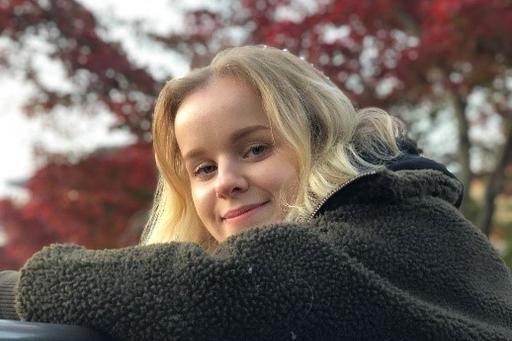
My name is Desirée Elveljung, a 22-year-old Swedish exchange student from Gothenburg University who, at the time of writing this, is situated in Tokyo, Japan.
In the beginning of 2018, I applied to study abroad as a part of my degree. Although a stressful process, the result of the application made it worth it; I was happy and relieved to be accepted into International Christian University (ICU), located about 40 minutes to the west of central Tokyo.
Back home in Sweden, I’m in the middle of double majoring in Japanese and English. At the same time as I was applying for this exchange, I finished my bachelor’s thesis for my degree in English linguistics.
University focused on globalization
This year abroad is therefore a part of my Japanese language degree, and my host university was a perfect choice for it. ICU is a university focused on globalization, meaning they offer extensive courses both for Japanese learners and English learners. Because their Japanese education matches the one at Gothenburg University, I feel comfortable knowing I’m making the most out of my Japanese degree here in Japan.
Challenge
Of course, there are many other reasons I decided to go on an exchange. Most of all, I wanted to challenge myself. I knew from previous students’ stories that this would be, at the very least, a rewarding experience. I knew from my own experience of traveling alone before that I would have to take steps on my own, live completely independently, mess up my Japanese here and there and probably feel depressed and scared some days, but I was ready for all that. It’s Japan after all – a country I’ve shown interest in since I was about 10 years old. First it was anime, like many others, then Japanese music, then Japanese history, et cetera. Eventually, the language. It had been my dream since childhood to learn Japanese. I longed for years for this exchange, so when 2018 finally came around I decided that it was my turn.
Every day a new experience
When applying, there were various universities throughout Japan to choose from. Between Osaka, Okinawa, Tokyo and others, Tokyo was always my first choice; I wanted a city that offered me a new environment with the possibility of various adventures. I also wanted the comfortability of a big city, knowing any flight home or wherever else would be as easy as possible. As expected, it has proven to be a great choice; Tokyo is an impressive city that changes drastically depending on where you are. The Shibuya area offers you a fast-paced environment with neon signs and advertisements all over the place, while Asakusa area offers you a more historical side of Tokyo. Because of how Tokyo has been structured and developed, every day feels like a new experience. Even when it’s just another drinking night with your friends.
Shibuya Halloween Party
My friends have been one of the best parts of my exchange. When we share stories from our lives before Japan, we often agree on how life can be so ordinary and non-changing, or how we feared doing this and that. I’ve realized that while we are all different people from different parts of the world, we have grown together throughout this year. And we’ve had some crazy experiences together as well. During Halloween, we went to Shibuya for the well-known Shibuya Halloween Party where people dress up in impressive costumes and roam the streets of Shibuya. Even though it was so packed we could barely walk sometimes, it was still one of the most memorable nights out.
Dorm life
A big challenge is the dorm life. Because I live in my own apartment back home, moving from that environment to a building filled with over 60 people has been a whole experience of its own. Having to share space and meet people just outside the door is quite different from a quiet apartment life. Sometimes you want complete silence, and sometimes you want things to be your way. Dorm life teaches you the hard way that such things aren’t always possible. But this living experience is also one of the greatest parts of my exchange. Having friends just a staircase down, partaking in dorm events and being a part of a small community has made my stay so much more worthwhile. Also, my dorm – Global House – mixes Japanese people with exchange students, meaning there is always a possibility to practice your Japanese.
Nature
Another great experience has been experiencing Japanese nature. In November, I climbed Mt. Takao (599 m) with two friends from ICU. Mt. Takao is easily accessible from central Tokyo and lies not too far away from ICU Campus. The view was even more impressive because of the autumn leaves, and from the top we were able to see Mt. Fuji. There are few mountains as impressive and beautiful as Mt. Fuji, and the view made me finally realize that I am in Japan.
Cultural differencies
The differences between Sweden and Japan have taught me about cultural differences. Correct garbarge separation is important, talking on the phone while riding public transport is a big no-no, and the toilets sometimes talk to you. Now and then you will be greeted by a robot at the restaurant. Knowing how to bow and say “sumimasen” (meaning excuse me/I’m sorry) is vital knowledge. As a resident, I’ve had the ability of experiencing many different sides of Japanese culture, both good and bad ones. I appreciate all of these experiences, as this exchange opportunity has given me a chance to understand Japan and Tokyo on a closer and realistic level, rather than as a one-week sensation.
Just go!
I know many students say the same and it gets repetitive, but if you’re thinking about going on exchange – go. You won’t regret it. I understand now what they meant when they said it. My experience so far has been even better than I expected. Of course it hasn’t been perfect all the way through, but it’s an unforgettable experience filled with memories you will hold close to your heart . From this exchange I’ve developed as a person, found friends from different parts of the world, enhanced my Japanese skills, even found love . I think that as a language student, it is an even more rewarding experience. Nothing is better than situating yourself in the country itself and forcing yourself to speak and listen.
If you’re considering Japan, understand that it might be a country quite different from your own. Also understand that it’s important to follow the rules here; respectfulness is key in this country. With that said, Japanese people don’t bite – they are open and welcome if you want to talk or need help. If anything, visit for the amazing food. Just go, you won’t regret it!
Desirée Elveljung
Exchange GU
Follow our exchange ambassadors on Facebook and Instagram! There are plenty of great tips about studying abroad.
Facebook: Exchange GU
Instagram: @exchangegu